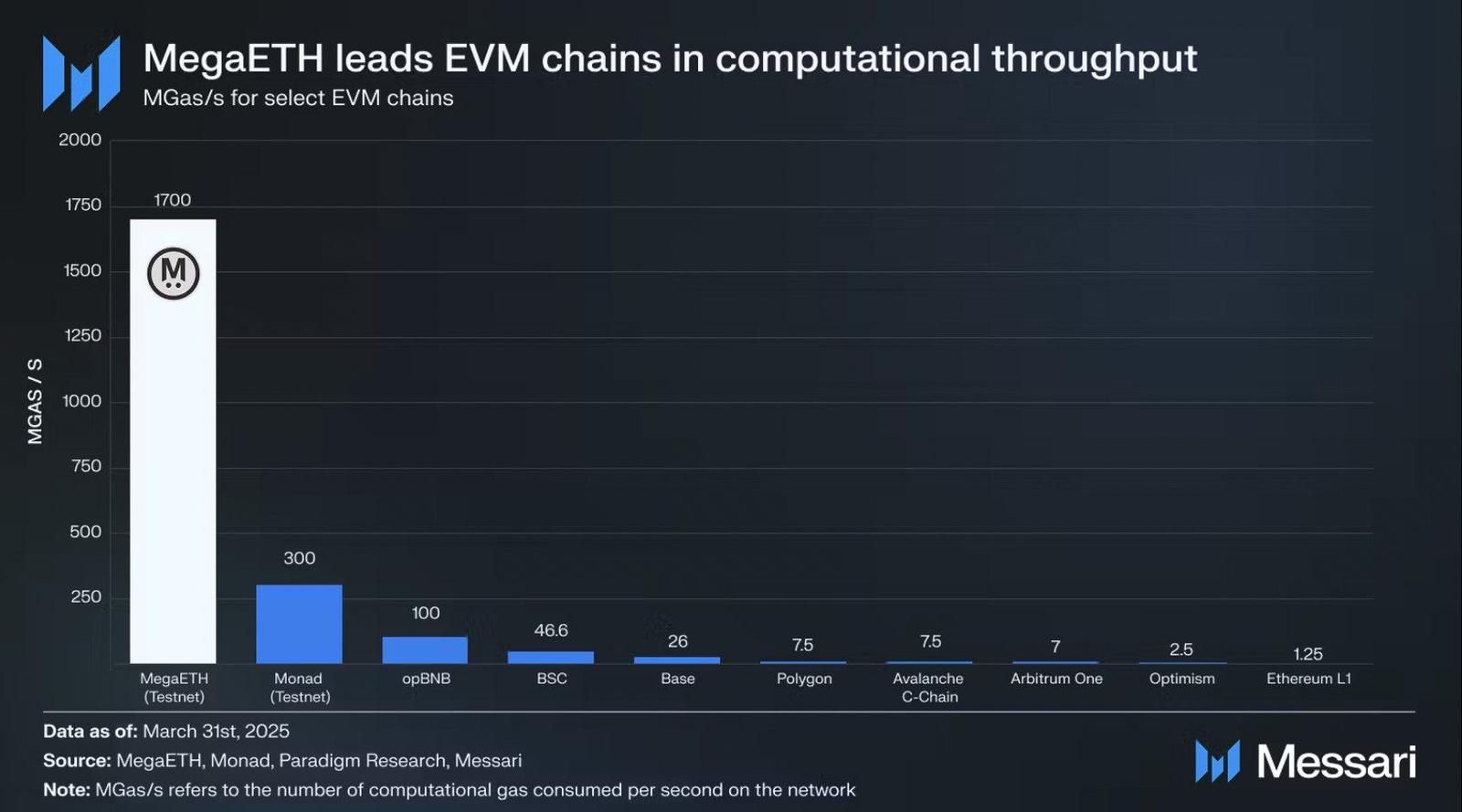MegaETH Breaks Speed Records on EVM Testnets
MegaETH is making headlines with a massive lead in computational throughput. According to data compiled by Messari, MegaETH achieved 1700 MGAS/s on its testnet as of March 31, 2025—over 5x faster than Monad and 17x faster than opBNB.
For context:
- MegaETH: 1700 MGAS/s
- Monad: 300 MGAS/s
- opBNB: 100 MGAS/s
- Ethereum L1: 1.25 MGAS/s
MGAS/s refers to the number of computational gas units processed per second, essentially measuring the raw processing power of these chains. MegaETH's performance puts it in an entirely different league.

Computational throughput ranked - Messari research
Backed by a16z: $140 Million Raised
Adding to the hype is the $140 million funding round led by Andreessen Horowitz (a16z). The capital injection signals not only institutional trust but also strong belief in MegaETH’s ability to solve the scalability trilemma while maintaining EVM compatibility.
With this funding, MegaETH plans to:
- Expand development and security infrastructure
- Launch on mainnet with aggressive throughput targets
- Attract DeFi and gaming dApps requiring massive compute efficiency
Why It Matters: Scaling, DePIN, and Beyond
MegaETH’s breakthrough couldn’t have come at a better time. With DePIN (Decentralized Physical Infrastructure), decentralized storage, and on-chain AI/GPU workloads gaining traction, there's an urgent need for blockchains that can handle heavy, high-frequency computations.
MegaETH is shaping up to be that base layer—especially for next-gen use cases like:
- Real-time AI inference on-chain
- Massive multiplayer crypto gaming
- Sensor-heavy DePIN applications
- High-volume DeFi protocols
Can MegaETH Lead the Next EVM Cycle?
While it’s still in testnet, MegaETH’s early metrics speak volumes. If it delivers similar performance on mainnet and maintains EVM compatibility, it could become the go-to chain for developers leaving slower L1s behind.
Given a16z’s backing and rising interest in hyper-performant smart contract platforms, MegaETH could very well lead the next EVM wave, especially as Ethereum L1 struggles with scaling limitations.
 cryptoticker.io
cryptoticker.io